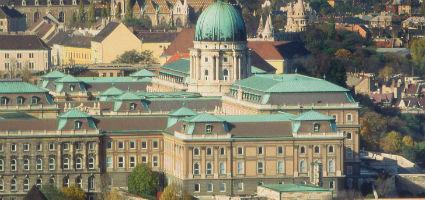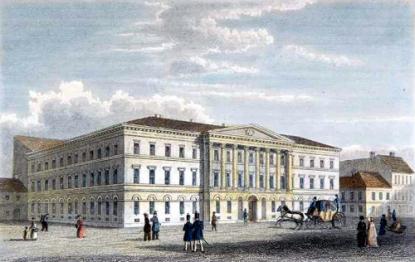2024. May 4. Saturday
Budapest History Museum - Budapest
 |
Address: 1014, Budapest Szent György tér 2.
Phone number: (1) 487-8800, (1) 487-8801
E-mail: btm@mail.btm.hu
Opening hours: Tue-Sun 10-18
|
The exhibition has closed for visitors.
2005.06.11. - 2005.08.31.
Museum tickets, service costs:
|
Ticket for adults
|
2000 HUF
|
|
|
Ticket for students
|
1000 HUF
|
|
|
Group ticket for students
(over 10 people)
|
500 HUF
|
|
|
Ticket for pensioners
|
1000 HUF
|
|
|
Ticket for families
|
2200 HUF
|
/ family
|
|
Group guide
(up to 20 people)
|
7000 HUF
|
|
|
Group guide
(20-30 people)
|
9500 HUF
|
|
|
Group guide
|
14000 HUF
|
|
|
Group guide
|
18000 HUF
|
|
|
Audio guide
|
1200 HUF
|
|
|
Photography
|
1000 HUF
|
At the beginning of the 19th century, the town of Pest was turning into a real commercial and industrial center. The dilemma of town planning became a very important question. Thus, in 1804 the Palatine entrusted the architect Hild János to make the plan of a new town and its suburbs. The plan was ready by 1805; its realization began in 1808 headed by the Committee of Beauty. One of the founding members of the Committee was the architect Hild born in Vienna. He studied in Pest where he became one of the most important masters of architecture.

Pollack Mihály was born in Vienna in 1792 and was an apprentice near Perchtoldsdorf. His teacher at the Academy was a master of the Austrian late Baroque, Johann Hetzendorf von Hohenberg. He traveled to Italy in 1793 and 1794 where he spent most of his time in Milan where his half-brother Leopoldo Pollack was a famous architect. He arrived to Pest in 1798 where his first work was to finish the reconstruction works of the church on Deák Square.
He became acquainted with the Palatine Joseph as the member of the Committee of Beauty. Pollack spent over six decades in Pest, throughout this time ha planned several private and public buildings of which he himself built some. He was a significant architect of Hungarian classicism, the style that’s popularity he increased at the beginning of the 19th century in Europe. The need for balanced and harmonic creations showed very strongly in architecture. The patterns followed that of Antiquity. The motifs such as the division with pole systems and triangle tympanums were borrowed from it.
The types of buildings, churches and palaces mostly remained the same in Pest, but new ones as for example the block of flats were assumed. Pollack Mihály dealt with all of them, but his most significant works were the new style public buildings. The German Theatre was one of these just like the buildings of the Vigadó, the Ludovíceum, the Forest Home called Josephinum and the National Museum built as the third museum in Europe for displaying collections.
Probably none other architect was so successful as Pollack. Following the designs of his buildings, his development can easily be traced. He was often in need of money, with the opposition of his assignors or the demur of his colleagues on his shoulders.
Beatrix Basics

Pollack Mihály was born in Vienna in 1792 and was an apprentice near Perchtoldsdorf. His teacher at the Academy was a master of the Austrian late Baroque, Johann Hetzendorf von Hohenberg. He traveled to Italy in 1793 and 1794 where he spent most of his time in Milan where his half-brother Leopoldo Pollack was a famous architect. He arrived to Pest in 1798 where his first work was to finish the reconstruction works of the church on Deák Square.
He became acquainted with the Palatine Joseph as the member of the Committee of Beauty. Pollack spent over six decades in Pest, throughout this time ha planned several private and public buildings of which he himself built some. He was a significant architect of Hungarian classicism, the style that’s popularity he increased at the beginning of the 19th century in Europe. The need for balanced and harmonic creations showed very strongly in architecture. The patterns followed that of Antiquity. The motifs such as the division with pole systems and triangle tympanums were borrowed from it.
The types of buildings, churches and palaces mostly remained the same in Pest, but new ones as for example the block of flats were assumed. Pollack Mihály dealt with all of them, but his most significant works were the new style public buildings. The German Theatre was one of these just like the buildings of the Vigadó, the Ludovíceum, the Forest Home called Josephinum and the National Museum built as the third museum in Europe for displaying collections.
Probably none other architect was so successful as Pollack. Following the designs of his buildings, his development can easily be traced. He was often in need of money, with the opposition of his assignors or the demur of his colleagues on his shoulders.
Beatrix Basics
